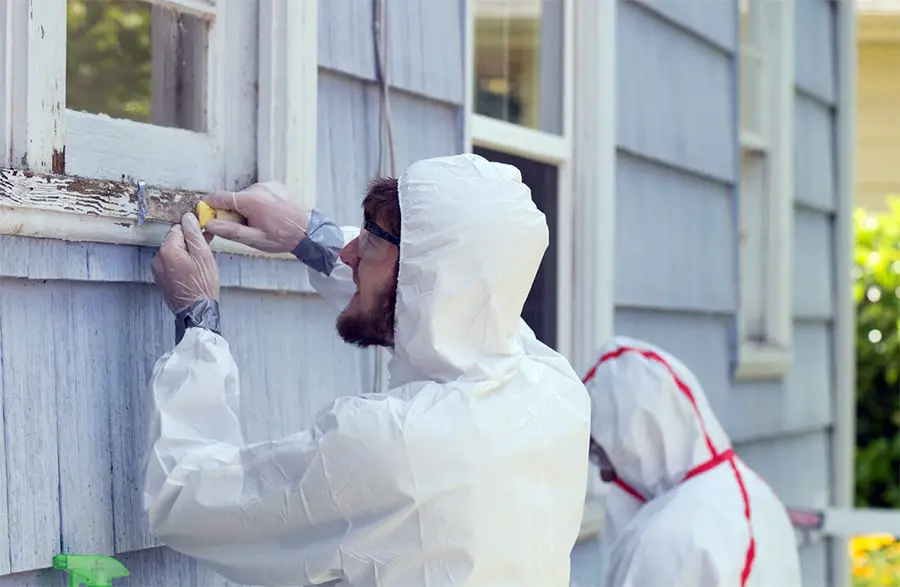
Lead poisoning is a serious risk that homeowners need to be aware of, especially if they’re considering getting any work done in their homes. If you’re concerned that lead-based paint might be found within your home, you need to check the exclusions list on your homeowners insurance policy to find out if lead abatement is covered.
Lead exposure is a serious issue to discover in your home, so once you know your coverage, you can take steps to choose the right containment method for your situation. In addition to understanding how your coverage works, you must also know what steps to take after you learn there is a risk of lead exposure in your home.

Risks of Lead Exposure
Lead exposure is not something to take lightly, as it can have severe health effects. No level of exposure is safe, and lead poisoning can lead to:
- Kidney damage
- Nervous system damage
- Learning disability
- Speech difficulties
- Behavior changes
- Fertility issues
- Risk to pregnancy
- Slowed growth in children
- High blood pressure
- Digestive issues
Clearly, lead poisoning is a serious concern and needs to be dealt with preventatively to reduce the risk of exposure and potential harm, especially for children in your home under the age of 6, who are very susceptible to its harmful effects.
Homes Likely to Have Lead-Based Paint
Homes built before 1978 are more likely to have lead-based paint used in them and require you to take precautions when doing home repair or renovations. Roughly two out of three homes built before 1940 and half of homes built from 1940-1960 contain lead-based paint.
Lead paint was used both outside and inside homes during this period and was frequently used on woodwork, like baseboards, wall paneling, and moldings, as well as on doors and windows. As of 2010, the Environmental Protection Agency (EPA) requires that any contractors working on homes built before 1978 be certified in “lead-safe” practices.
Additionally, contractors have to provide clients with information from the EPA on what practices and procedures will be undertaken to protect their home and their family from lead exposure.
How Lead Abatement Works
Lead abatement is the process of reducing the risk of lead exposure by removing or covering up areas or material that have lead-based paint on them. There are several different methods that certified contractors can use to make your home safer, and choosing which one is right for you depends on the condition of your home.
If the lead-based paint in your home isn’t breaking off or damaged and no one under the age of 6 frequents the home, the cheapest option would be to leave the paint as is. If there are any paint chips or cracking paint, however, this is not a safe option, and you’ll have to consider one of the other options.
Professional lead-based paint removal can be expensive, and the EPA estimates the work can run between $8 to $15 per square foot. That can go into the tens of thousands depending on the size of your home and the extent of the high-risk paint exposure. In that case, the more affordable option of covering the paint may appeal to you and your wallet.
The process, known as encapsulation, requires the application of a coating that creates a water-tight seal over the lead-based paint. The issue with this method is that it can wear over time, especially when used on frequently opened doors and windows.
Another option involves enclosing lead paint covered surfaces with new drywall or siding made of aluminum or vinyl. Outright removal of the lead-based paint can be done through wet sanding surfaces. These methods can be expensive and time-consuming, so consult with a contractor trained to handle lead-based paint to discuss your options.

